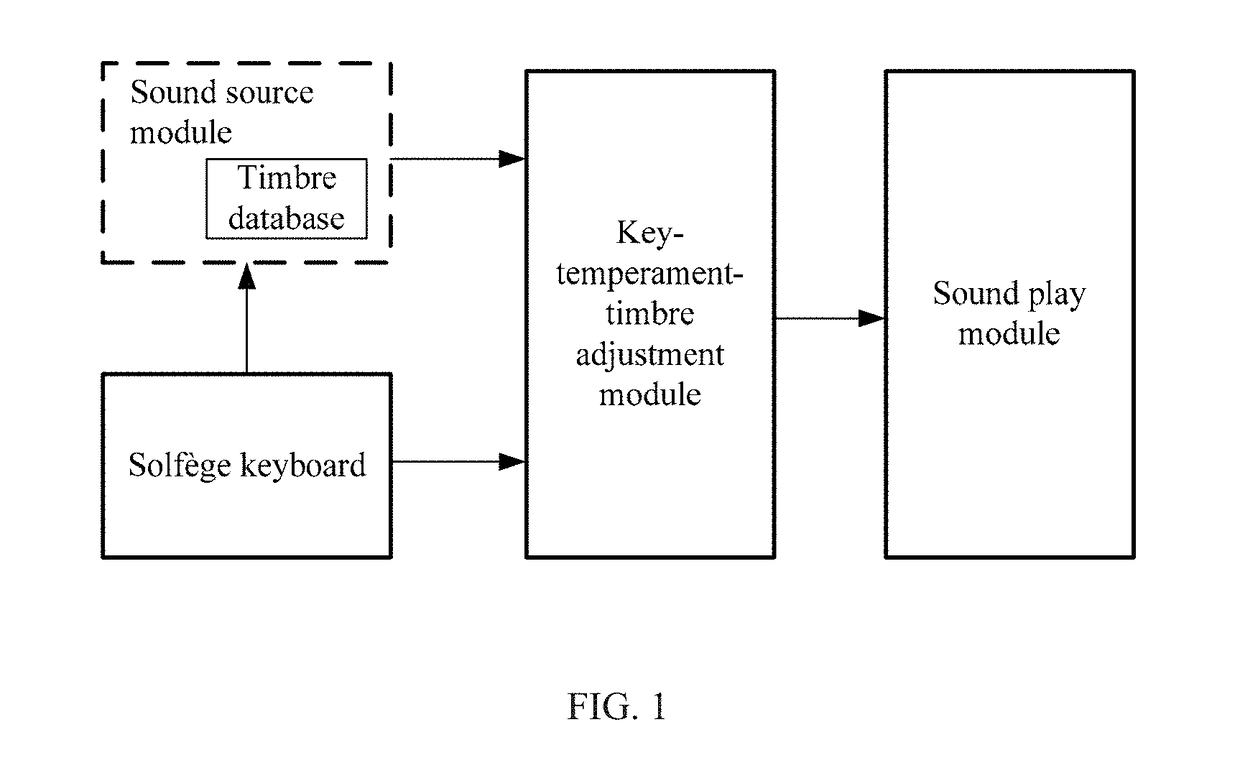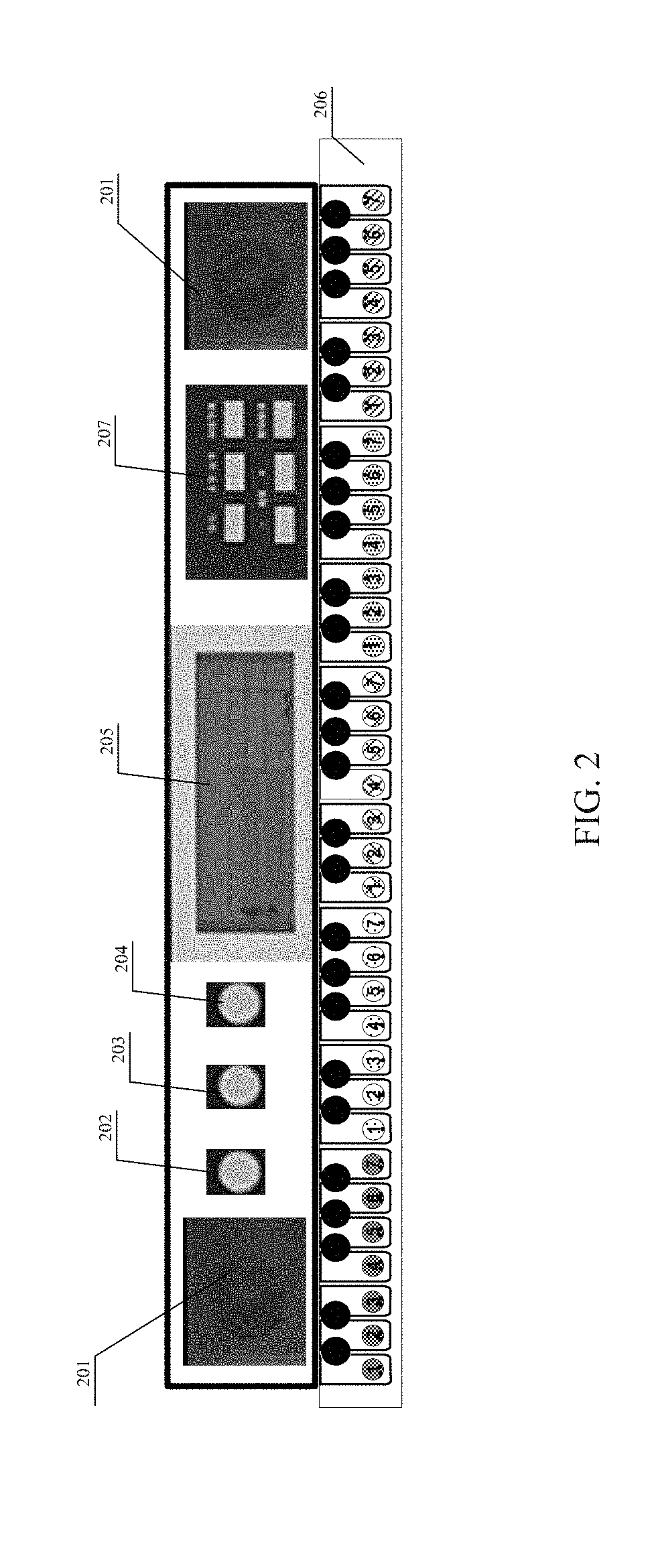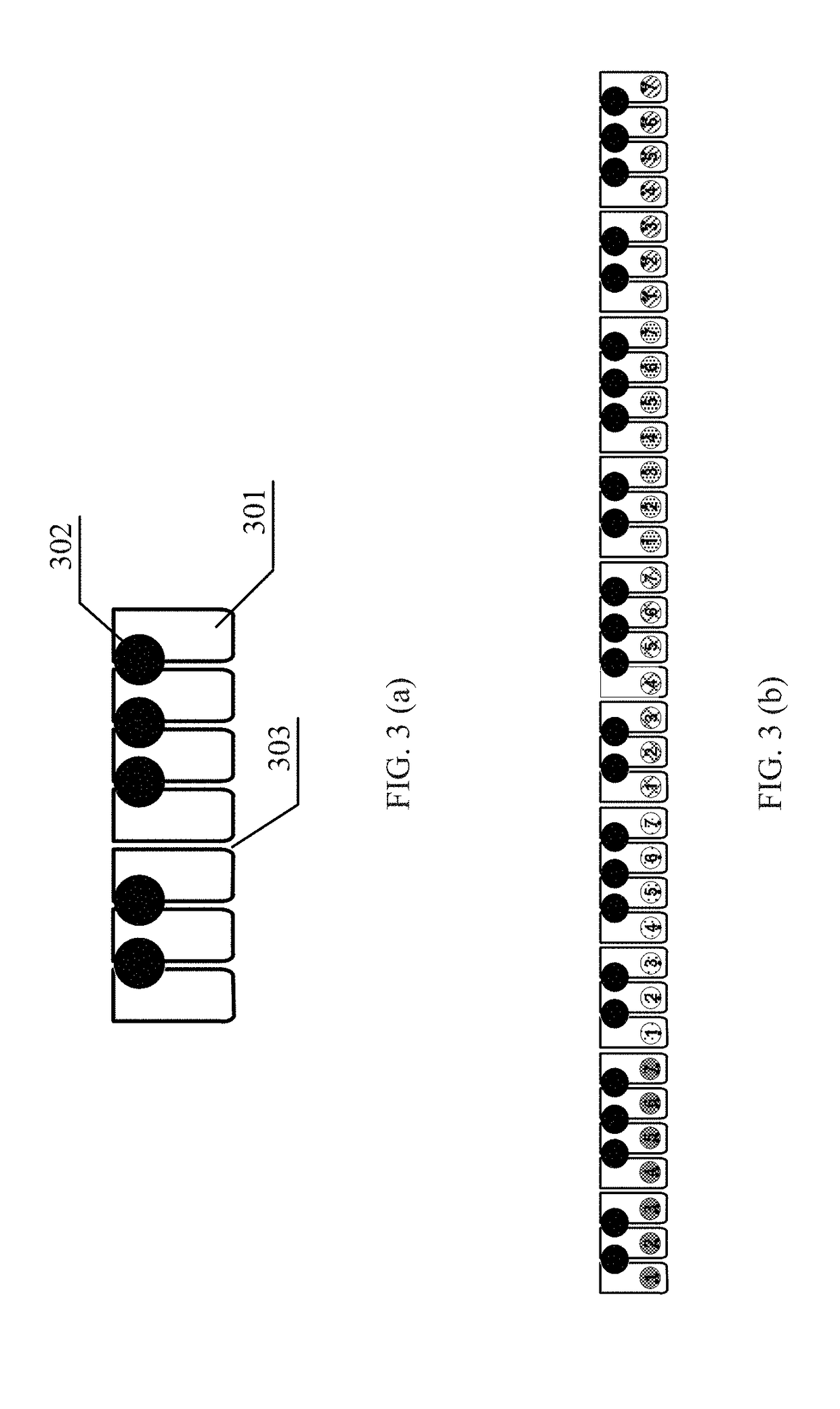Digital sight-singing piano with a fixed-solfège keyboard, continuous keys and adjustable tones by kneading piano keys
a digital and keyboard technology, applied in the field of digital musical instruments and musical notation methods, can solve the problems of not being able to sing with a fixed-solfège keyboard, and not being able to describe some elements of a piece, etc., to achieve the effect of compact keyboard, large size and reduced nois
- Summary
- Abstract
- Description
- Claims
- Application Information
AI Technical Summary
Benefits of technology
Problems solved by technology
Method used
Image
Examples
Embodiment Construction
[0069]FIG. 1 illustrates a block diagram of a digital sight-singing piano according to embodiments of the invention. As shown in FIG. 1, a digital sight-singing piano includes a sound source module, a solfège keyboard, a key-temperament-timbre adjustment module, and a sound play module. The sound source module is responsible for collecting and storing sound sources of all kinds of musical instruments and sets up a sound source database. The solfège keyboard sends instructions to the sound source module and the key-temperament-timbre adjustment module according to the buttons pressed. The key-temperament-timbre adjustment module edits the sound source and generates a new sound file according to the received instructions. The sound play module is responsible for playing the sound file.
[0070]FIG. 2 illustrates an exemplary digital sight-singing piano according to embodiments of the invention. The control unit of the solfège keyboard, the sound source module and the key-temperament-timb...
PUM
 Login to View More
Login to View More Abstract
Description
Claims
Application Information
 Login to View More
Login to View More - R&D
- Intellectual Property
- Life Sciences
- Materials
- Tech Scout
- Unparalleled Data Quality
- Higher Quality Content
- 60% Fewer Hallucinations
Browse by: Latest US Patents, China's latest patents, Technical Efficacy Thesaurus, Application Domain, Technology Topic, Popular Technical Reports.
© 2025 PatSnap. All rights reserved.Legal|Privacy policy|Modern Slavery Act Transparency Statement|Sitemap|About US| Contact US: help@patsnap.com



